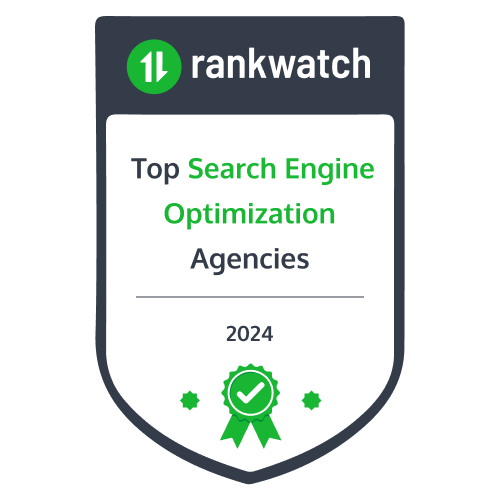Both content SEO and technical SEO determine your website’s overall ranking in search results, but how do you distinguish between the two?
Content SEO helps you optimize content with relevant keywords, meta tags, and other elements that help search engines understand and rank it for relevant search terms.
Technical SEO ensures that search engines can effectively crawl and understand your website’s content during indexing. This process helps your content appear on search engine results pages.
Technical SEO also enhances your website’s accessibility by helping you increase your page load speed and optimize it for mobile and desktop devices.
These two strategies are interdependent, making it a challenge to draw a clear line between content SEO and technical SEO.
So, how do they differ? Let’s look at each strategy separately and find out.
Content SEO
Content SEO involves optimizing several elements of your content for search engines, such as titles, headings, body text, meta descriptions, and images. The goal is to incorporate relevant keywords and phrases your target audience will likely use in their search queries.
Content SEO also focuses on user experience by ensuring that your content is readable, comprehensive, and actionable for readers.
High-quality content delivers a great user experience that resonates with your target audience and establishes your website as a credible source of the information they need.
Let’s examine Berger Financial Group’s content marketing strategy to understand how content SEO optimizes content for readers and search engines. Berger Financial Group educates its audience on income and tax planning, retirement planning, and other services.
They create blog posts, case studies, or whitepapers on various topics, with titles like “The Difference Between Will And Trust” or “Typical Pension Payout Options And How to Choose One.”
Their detailed and actionable content makes it an invaluable resource for entrepreneurs seeking specific wealth management guidance. It covers topics like retirement savings, tax planning, annuity and IRA, and much more.
To optimize your content for relevant keywords, content SEO relies heavily on keyword research. This involves identifying the phrases that your target audience is using and incorporating them into your content titles, headings, and body text.
For example, an article titled “The 8 Key Elements for a Foolproof Enterprise SEO Audit” could target keywords like “Enterprise SEO audit,” “SEO strategy,” “search engine optimization,” and more.
Technical SEO
Technical SEO concentrates on the behind-the-scenes aspects of a website that affect its crawlability, indexability, and overall search engine performance.
This includes optimizing elements such as site structure, navigation, page speed, mobile responsiveness, XML sitemaps, robots.txt files, and schema markup.
Site structure and navigation involves organizing your website’s content in a logical, user-friendly hierarchy. Think clear navigation menus and internal linking. This guarantees that search engines can efficiently crawl and understand the relationships between different pages.
For example, once a searcher arrives on our homepage, there are quick links to help them find what they are looking for so that they don’t get stuck and bounce off.
On the other hand, search engines take a cue from this site structure as it crawls and indexes to create XML sitemaps so that it shows relevant results to searchers who enter relevant search queries on search engines.
XML sitemaps provide search engines with a structured list of your website’s pages, while robots.txt files instruct crawlers on which pages or directories to crawl or ignore.
Adding structured data markup to your website’s HTML can enhance how your content shows up in search results. The result? Potentially increasing click-through rates.
Mobile responsiveness guarantees your website’s design is mobile-friendly and adapts to different screen sizes and resolutions. This provides a great user experience for searchers who visit your website using various devices.
Faster page load times improve user experience and can positively impact search rankings. To determine your page-load speed, use Google’s PageSpeed Insights tool or GTmetrix.
Why You Need a Holistic SEO Approach
You need both content SEO and technical SEO to create a comprehensive and effective SEO strategy because they work together to achieve better search engine visibility and traffic.
Here are six more reasons you need to implement them together to get better results from your SEO strategy:
1. Improve the Crawlability and Indexability of Your Website’s Content
Content SEO helps you create and optimize your content for searchers and search engines. Technical SEO ensures that search engine bots can easily crawl and index your website’s content.
Without proper technical optimization to allow crawling and indexing, search engines won’t discover, access, and understand your website’s content. And that regardless of how well-written and optimized it is for relevant keywords.
2. Deliver a Better User Experience
Content SEO provides valuable, relevant, and engaging content that meets user intent and satisfies search queries.
To fully deliver a great user experience, you need to work on technical SEO factors like site speed, mobile responsiveness, and site structure. These factors help keep visitors and reduce bounce rates. In the context of React web development, ensuring that your React-based site loads quickly and is optimized for mobile can significantly enhance user experience.
3. Optimize For Ranking Signals
Search engines consider content and technical factors when determining a website’s ranking in search results.
High-quality, well-optimized content is a crucial ranking signal. Still, technical elements like site architecture, schema markup, and page speed also affect how search engines perceive and rank your website.
4. Get More Organic Traffic and Conversions
Content SEO helps attract organic traffic by optimizing your content for relevant keywords and topics.
However, if your website has technical issues, such as slow loading times or poor mobile usability, visitors may leave without taking the desired actions, leading to lower conversions and engagement.
5. Ensure the Long-term Success of Your SEO strategy
Search engine algorithms and user behavior are constantly evolving. This requires ongoing efforts to maintain and improve both content and technical SEO.
Choosing to improve technical SEO while ignoring content SEO can lead to declining search engine visibility and performance over time.
6. Gain a Competitive Advantage
By implementing both content SEO and technical SEO best practices, you can gain a competitive advantage. Why? You have a leg up on other websites that focus solely on one aspect or neglect SEO altogether.
A well-rounded approach gives you the best chance of outranking competitors in search results.
How To Implement Both Content and Technical SEO
A thorough content SEO strategy starts with market research to identify relevant keywords that your target audience is searching for. Use tools like Google Keyword Planner, Ahrefs, or Semrush to find high-volume and low-competition keywords.
If you’re targeting bottom-of-the-funnel content, start with low-volume keywords, as there’s less competition for them.
Then, examine your competitors’ content strategy and look for hidden opportunities to reach audience segments they might have missed.
Develop valuable and compelling content that caters to the search intent of your desired keywords. This could include blog posts, articles, guides, videos, or infographics. Topics like event photography, for example, can attract niche audiences and provide visually engaging content that performs well across platforms.
Organize your content logically and use proper formatting (headings, bullet points, etc.) to improve readability and scannability.
Once you’ve finished creating your content, optimize it for the target keywords by including them in the:
- Title
- Headings
- Meta descriptions
- Image alt text
- Throughout the body copy (without over-optimization or keyword stuffing).
Use tools like Frase, Surfer, or MarketMuse to optimize your content with relevant terms to compete with similar content.
Optimizing content SEO terms attracts organic traffic and enhances the user experience. It also fosters longer engagement and increased visibility in search engine results.
Link to other relevant pages on your website from within your content to improve site architecture and help search engines better understand the relationships between your pages.
While content SEO focuses on creating high-quality, engaging, and keyword-optimized content, technical SEO guarantees that search engines make this content easily discoverable and crawlable.
For example, a well-structured website with a logical hierarchy and internal and external linking systems can help search engines better understand how different content pieces are related and improve rankings.
Create and submit XML sitemaps to search engines to help them discover and crawl all your website’s pages more efficiently. Use a robots.txt file to control which pages search engines can and can’t crawl.
Additionally, fast page load times and mobile responsiveness enhance the user experience for visitors arriving from search engines, decreasing bounce rates and increasing engagement. Optimize your website’s loading speed by:
- Using a content delivery network (CDN).
- Leveraging browser caching
- Compressing images
- Minifying code
Incorporate schema markup to enhance how your content shows up in search results. Doing so can potentially increase click-through rates from users who find your content more appealing and informative.
Regularly perform technical SEO audits to identify and address any issues that could hinder search engine crawlers from properly indexing your site, such as crawl errors, broken links, or duplicate content.
Conclusion
Content SEO and technical SEO are like two sides of the same coin. They work in tandem, optimizing your website’s content and infrastructure to help you rank higher and get more visibility in search results. However, understanding the distinct roles they play is crucial.
With content SEO, you’re playing the long game – researching keywords, crafting content optimized for those terms, and signaling relevance to search engines. It’s how searchers find your content.
Technical SEO is more like housekeeping – tidying up your website’s architecture, increasing load speeds, and ensuring users access your content across different devices.
SEOHERO is one of the best SEO agencies out there, helping businesses from all over the world achieve long-term growth through top-notch technical SEO and content SEO services.
We tackle everything from Ecommerce SEO to health care and help entrepreneurs and business owners create effective SEO strategies. Our affordable solutions increase brand visibility, attract more organic traffic, and generate qualified leads.
We analyze performance data to optimize your SEO strategy for compounding results over time to help you dominate your industry.
Contact SEOHERO today for a free consultation, and we’ll discuss your SEO needs and create a custom SEO strategy for your business. You’re just one click away from skyrocketing your SEO success.




